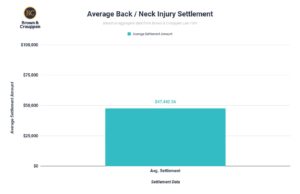Missouri law defines a “wrongful death” as a death that results “from any act, conduct, occurrence, transaction, or circumstance which, if death had not ensued, would have entitled such person to recover damages in respect thereof.” (Mo. Rev. Stat. § 537.080 (2021). In other words, if a loved one dies due to the negligence of another person, the deceased cannot have their day in court. Therefore, the victim’s surviving family members (who become the plaintiffs) can bring a lawsuit on their behalf. This means, to succeed in a wrongful death lawsuit against the wrongdoer, the surviving family members will need to prove everything the victim would have needed to prove if they had lived. A personal representative of the deceased’s estate is usually appointed for these claims.
Common incidents that give rise to wrongful death lawsuits include nursing home abuse, motor vehicle accidents, workplace injuries, use of defective products, use of dangerous drugs, and medical malpractice.
Follow these steps to prove a wrongful death claim:
- Defendant was responsible to act with a duty of care
- Defendant breached the duty of care
- The breached duty of care caused the death
- Damage followed as a result
1. Defendant was responsible to act with a duty of care
To succeed in a wrongful death claim, the plaintiff must prove that the defendant owed a duty to the victim. Duties can arise from laws, regulations, contracts, or a relationship between the victim and the defendant. A duty to exercise the highest degree of care when driving on public roadways is established by state laws. A duty to protect someone from harm can arise from special relationships such as doctor-patient, product manufacturer and consumer, a common carrier and its passenger, school-student, innkeeper-guest, babysitter-child, etc.
2. Defendant breached the duty of care
Once the plaintiff establishes that the defendant owed a duty of care to the victim, the plaintiff must prove that the defendant breached that duty. To prove that the defendant breached that duty, the plaintiff must prove that the defendant deviated from what a reasonable person in that situation would have done. Depending on whether the duty arose from law, contract, or relationship will determine whether the defendant provided the same level of care a reasonable person would. For example, how would a reasonable person operate their vehicle on a highway in inclement weather? How would a reasonable babysitter supervise a child? How would a reasonable property owner act with respect to dangerous conditions on their property? How would a reasonable doctor treat a specific patient?
3. The breached duty of care caused the death
Next, the plaintiff must prove that the defendant’s breach of the duty owed to the victim caused the victim’s death. Proving causation involves extensive evidence gathering such as the victim’s medical records and autopsy report, eyewitness testimony, pictures or video footage of the incident, etc. In cases where there could be multiple causes for a victim’s death, such as a multi-car accident or a medical malpractice case involving a patient with pre-existing conditions, your attorney might hire highly skilled experts to give an opinion on what the true cause of the victim’s death was. Expert witnesses can include accident reconstructionists, doctors, mechanical engineers, etc.
4. Damage followed as a result
Finally, in order to prove a wrongful death case, the death of the victim will also need to produce calculable damages. This means the surviving estate or family members of the deceased suffered financial or personal losses due to the victim’s death. Proving damages in a wrongful death suit often requires testimony from the victim’s family to establish how their lives have been affected as a result of losing their loved one. What damages are recoverable under a wrongful death lawsuit can vary by state law. Examples include:
Compensatory damages (also referred to as “actual damages”): It means the objective dollar amount needed to compensate (hence, the name) a plaintiff for the monetary value of what they either lost or incurred because of the loss of their loved one. Typical compensatory damages in a wrongful death lawsuit include:
- Medical bills for treatment the decedent received as a result of the incident that caused their death
- Medical bills for treatment family members received as a result of losing their loved one (grief counseling visits, prescription medications, etc.)
- Loss of the decedent’s income at the time of the incident
- Loss of the decedent’s future income based on their skills and earning potential had they lived
- Burial costs
- Funeral costs
- The costs of canceled plans such as a wedding or vacation
- Costs of household services family members had to pay for as a result of losing their loved one
Non-compensatory damages: Non-compensatory damages, also called “non-economic” damages, are far more subjective than compensatory damages. They include:
- The decedent’s pain and suffering before death
- Loss of relationship and guidance
- Grief and mental anguish
Punitive damages, sometimes called “exemplary damages,” are designed to both punish a defendant for wanton, reckless, or intentional behavior, and to deter that defendant from such acts in the future. Whether punitive damages are allowed in a wrongful death lawsuit varies by state law.
Who can file a wrongful death lawsuit?
The person eligible to file a wrongful death lawsuit typically depends on the state. In each state, however, the claim can be filed by immediate family members. This can include the surviving spouse, child, parent, siblings, or grandparents. For example, Missouri wrongful death claims have a deadline of 3 years and may be filed by surviving family members (such as a spouse).
How are wrongful death settlements determined?
No amount of money can replace a loved one. Factors considered when determining a wrongful death settlement amount include the damages discussed above, the conduct of the at-fault party, and the insurance coverage available for the at-fault party.
Who gets the money in a wrongful death suit?
In a wrongful death suit, the plaintiffs who brought the suit will receive the money.
Get help with your case from Brown & Crouppen Law Firm
Although no amount of money can take away your emotional pain, compensation from a wrongful death lawsuit may help ease the financial burden–and hold the responsible party accountable. Brown & Crouppen’s wrongful death lawyers help in various ways:
- Assessing your wrongful death claim (we offer a free case evaluation)
- Providing ongoing legal advice about your wrongful death case to ensure you understand the legal issues
- Helping you gather evidence and other documentation
- Questioning witnesses and working with medical experts to support your wrongful death action
- Negotiating with the insurance company and evaluating settlement offers so you can concentrate on getting the emotional support you need





